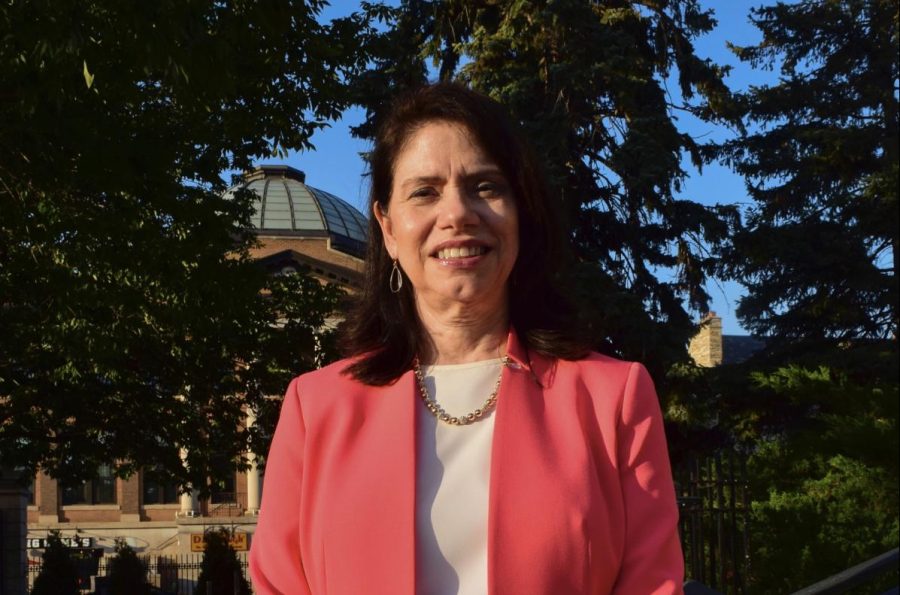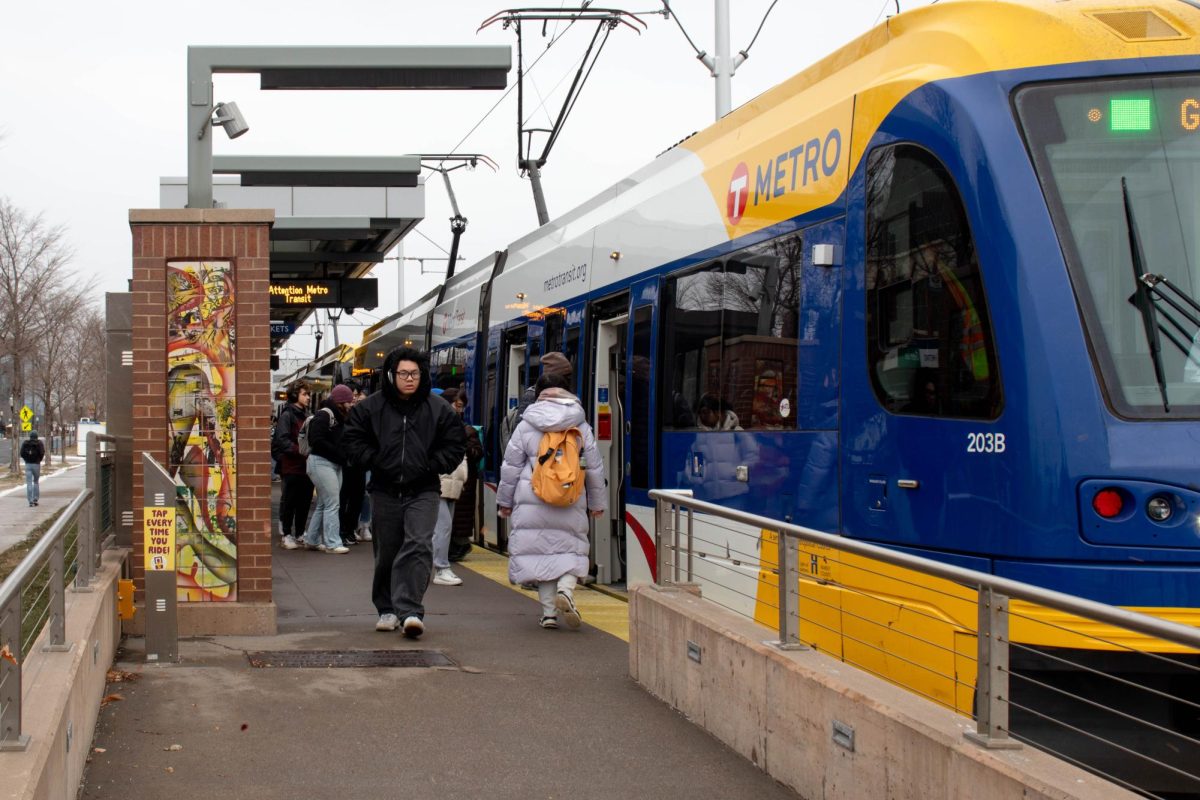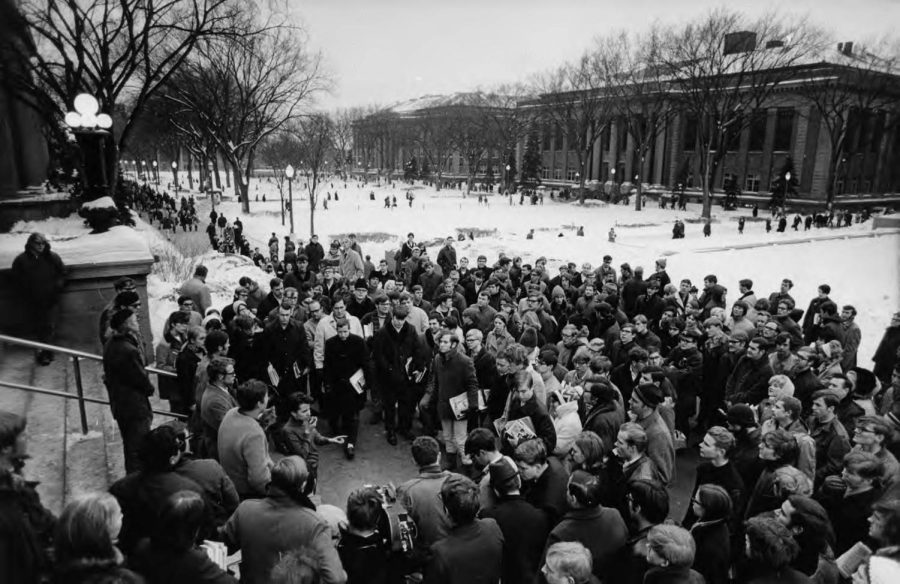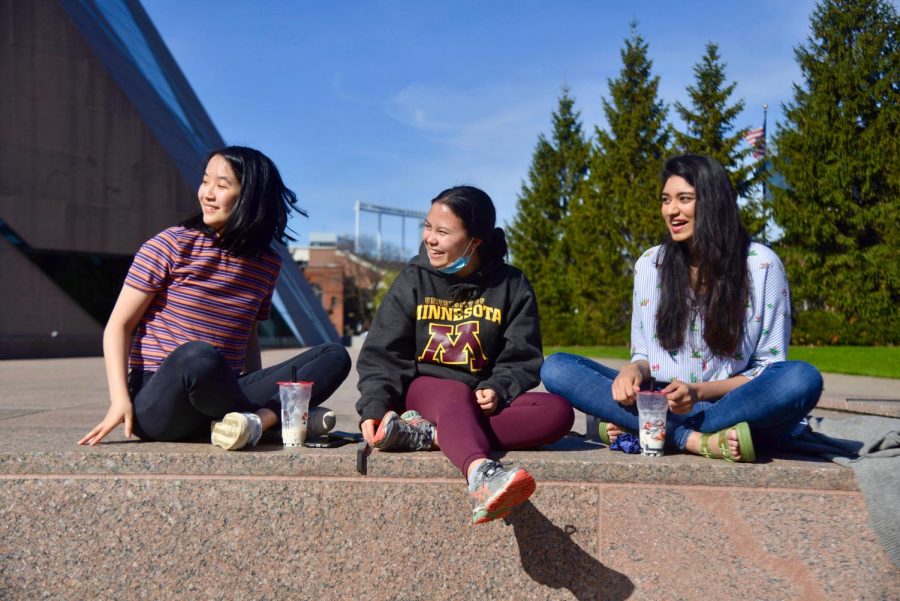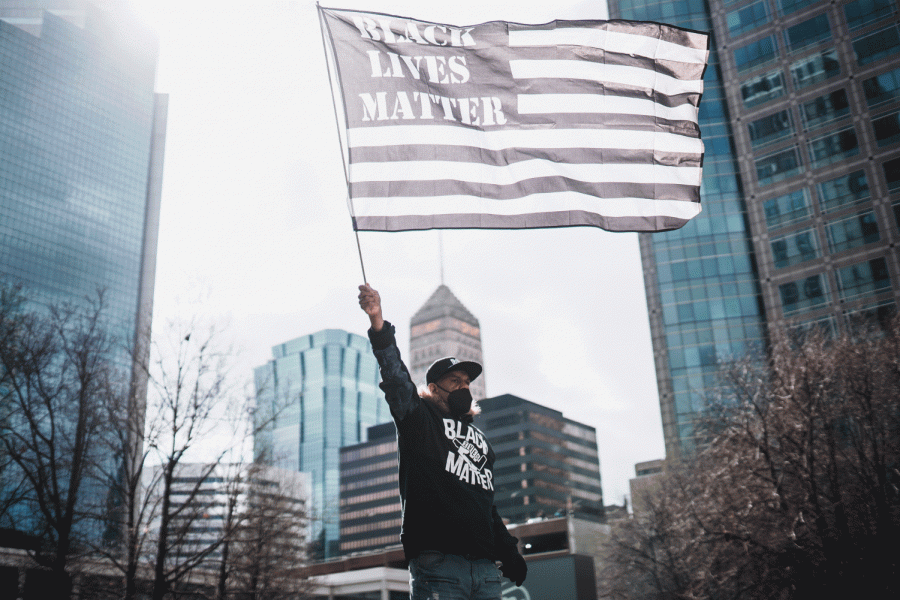Nautica Flowers has had enough.
Since June 29, the third-year University of Minnesota student has been running an Instagram callout page for Eagan High School, collecting and sharing accounts of racism and discrimination.
Flowers has some stories of their own. Throughout their four years at Eagan High School, Flowers alleges a former student — who was later hired at the school — sexually assaulted them, that they were called out of class by teachers to educate their peers about the history of the “n-word” and were often gaslit into believing their experiences did not matter.
This narrative is not unique. Starting late June, more than a dozen similar social media accounts have surfaced, designed as a platform for sharing stories and holding schools accountable for their actions. Submissions are mostly anonymous, and in them students detail acts of racism and discrimination, exposing a culture in the Minnesota education system that students say often disregards or gaslights concerns from students of color.
“There’s so many stories, and there’s so many names,” Flowers said.
Despite past meetings with administration, Flowers said they have been met with relative inaction. They hope that sharing these stories will change that.
Eagan High School has not responded to multiple requests for comment about the alleged assault.
University students Isra Hassan and Samiira Husein run an Instagram page sharing stories from both former and current students from Anoka-Hennepin, the largest school district in the state.
Within two days of starting the page, the two Anoka-Hennepin alum received over 50 messages from people wanting to share their experiences. Now, two weeks in, they have received over 100 and have amassed more than 2,100 followers.
Hassan said seeing all the messages detailing xenophobia, racism, homophobia and sexual harassment disgusted her.
“It’s taking advantage of power dynamics that were created in the first place. That’s what enables such culture to continue for so long,” she said. “Even parents ultimately fall victim to ‘nothing can be done.’”
One of the things Hassan said she finds most heartbreaking is that many of these instances happen to students during a time in their life of important personal growth and development.
“There’s so much understanding of oneself, and there’s so many pressures that they’re dealing with on top of one another, and trying to juggle abuse … is just another layer that shouldn’t be there,” she said.
Although some people submitting stories or running the accounts want to remain anonymous for safety reasons, Hassan and Husein said they have chosen to exclude students’ names to center the focus on their experiences and hopefully help them start the healing process.
“It makes you focus on the details of the story, the fact that this person’s story can be applicable to anyone you know,” Hassan said. “We want the attention to be on administration, and we want the attention to be on adults that have failed students, that have failed minors.”
Effect on students
Growing up in a predominantly white school in Bloomington, second-year University student Angela Kunkel felt like discriminatory behavior was normalized in her district.
In elementary school, Kunkel had friends who were placed in English-language learner programs, despite speaking English as their first language. A first-generation Peruvian American herself, she remembers school administrators telling her mother to not speak Spanish to her at home because they thought it would put her behind in English class.
While taking Spanish, she said she would often watch white students be praised for speaking Spanish well, but she would be told she was not “Latina enough” if she made a spelling mistake or did not fit certain stereotypes, like enjoying Yerba Mate Tea. The Bloomington Public Schools superintendent did not respond to multiple requests for comment about these alleged incidents.
“That was pretty traumatizing. I think that really affected the way I’m confident, first about my identity and second about how I engage in material,” she said. “I definitely second guess myself because I don’t want to be ridiculed, or I don’t want to put a label on myself.”
Some of the self-consciousness follows her into college. Kunkel said she is scared to join La Raza Latinx Student Cultural Center at the University or take Chicano studies classes because she feels like she does not fit in.
Now part of a group running a Facebook call-out page, the Bloomington Anti-Racist Coalition, Kunkel said the emotional burden of collecting stories, reaching out to administration for answers and cultivating a list of demands is heavy.
The group often receives hurtful emails or comments from members of the community discrediting or disparaging their efforts, telling them “you are what is wrong with the world” and threatening to report the page.
Despite this, Kunkel said their efforts are worth it if it brings about change.
“There’s such violence that happens in our suburbs, and everyone bats a blind eye,” she said.
Ruwayda Abdullahi, a first-year student at the University who graduated from Irondale High School last spring runs an Instagram page that shares stories from the Mounds View school district. For her, this is a movement that is not going to go away easily.
In contrast to some of the other pages, students from the Mounds View Public Schools write page-long letters addressed to the community or district administration, some sharing incidents that happened as early as elementary school.
At Irondale, Abdullahi said she felt the school was not as invested in students of color. She was often dissuaded from taking honors courses. A district spokesperson did not comment on the alleged incident and referred the Minnesota Daily to a press statement about Mounds View’s commitment to racial equity.
“It just makes me feel like I have to go on turbo mode,” she said. “I have to go the extra mile and do more than my average classmate would.”
To stay on top of her college applications, Abdullahi would go to the college advising office often. For students of color who could not take those extra steps, they could fall through the cracks, she said.
Push for accountability
Grace Boutouli, an incoming first-year student who just graduated from Eagan High School, said despite years of evidence and students going to administration with their stories, the recent callouts are “a wake up call for a lot of people.”
“The administration has been sleeping,” Boutouli said. “Now’s the time where we start holding you accountable for that. We are your taxpayers. We pay your salary, you are a public servant to us.”
Boutouli said she would like to see several changes in Eagan High School, including the firing of the principal and several other key administrators. She also said she wants the district to hire more teachers and counselors of color, establish reformed anti-racist staff training and hold them accountable for breaking protocols.
Although she acknowledges this may take some time to implement, she said she is tired of not seeing the school live up to their policies and commitments to equity and diversity.
“I don’t think this is like a summer, cute, get your activist points in,” she said. “This is in the long run because anything good is worth fighting. Everything good takes a while. This whole movement … just got to this point. We’re done. We’re going public with this. We tried working with you.”
Many groups have demanded the removal of school resource officers from schools, citing data that has shown that despite students of color being a minority in schools, they are more likely to be arrested or charged with a crime while in school compared to their white peers.
Instead of funding SROs, students say schools should invest in classrooms, mental health services and hiring faculty of color. Studies have also shown that adding SROs do not necessarily make schools safer, even during a school shooting, and there is no clear correlation between theft or violence and SROs in schools.
An incoming University student, who went to Hopkins High School and wished to remain anonymous, runs a callout page advocating for the district to remove SROs. The student asked to remain anonymous in order to focus media attention on the organizers’ mission and demands.
She said SROs contribute to the school-to-prison pipeline of people of color into the criminal justice system. Seeing Minneapolis and St. Paul schools end their contracts with police following the death of George Floyd inspired her to start the page. The momentum is not ending there, however, as students from over 20 schools plan to march for police-free schools on Aug. 8, starting at the Department of Safety.
The Hopkins superintendent said the school district is allowing a student-led team to review the SRO contract and provide recommendations to the school board in August.
In addition to removing SROs, activists have been calling for changes in the curriculum to include more representation for people of color, form paid community committees to review school board policies and establish definitive repercussions for students or staff using racial slurs, among other demands.
Justin Grinage, a University professor specializing in race and K-12 education, said his experience as a high school English teacher in the Twin Cities shaped his research agenda at the University. Grinage said he experienced firsthand how racist the school system is for youth of color.
While being given a tour of the school and introducing himself on his first day, three or four of his white colleagues said they thought he was the school’s new security guard. In his first few years teaching, Grinage said he struggled with the new job, an adjustment only compounded by discrimination.
“I would say, ‘I don’t know if I can do this, I might have to quit.’ It was a very tough couple of years there,” he said. “I think a lot of other teachers of color experience some of those same things and actually don’t persevere, either quit or they just can’t deal with some of the racism they experience in the workplace.”
Grinage said the topic of race is uncomfortable for a lot of teachers, so many default to surface-level conversations about race. Actively having anti-racist conversations, and in a way that encourages and acknowledges student growth, has shown to be effective in classrooms, he said.
“If we think about schools not existing in a vacuum, and knowing that systemic racism exists in society it will of course exist in schools,” he said.
The paths forward
According to data from the U.S. Department of Education, Black students made up almost half of out-of-school suspensions at Hopkins Senior High in 2015, even though they were only about 19% of the school’s population.
White students made up nearly 31% of these suspensions for the year despite making up about 61% of the student body.
Since June, several school districts have released statements in response to student concerns. Many have conducted listening sessions with students and are developing new equity initiatives.
On July 2, Mounds View administration outlined a series of action steps including curriculum reform in English and history classes, an increase in hiring of BIPOC teachers and anti-racist and implicit bias training for staff and faculty. The Bloomington Public School Board passed a resolution on June 22 to use a racial equity lens when reforming or establishing new school goals and policies.
The St. Anthony-New Brighton district superintendent said they are reviewing every allegation and have secured an external investigator. Eagan High School told the Minnesota Daily they have met with organizers and plan to establish an Equity Advisory Council consisting of 30 community stakeholders and administration to make recommendations to the superintendent and address racial and equity concerns.
“The truth is that we live in a society that has been systemically racist,” said Hopkins Schools superintendent Rhoda Mhiripiri-Reed. “We have policies that are either unfair or operationally just disproportionately impact certain students. We have practices, whether they are leadership or instructional practices, that have harmed kids.”
Mhiripiri-Reed, who has been superintendent for four years in the district, said the school will continue working to be anti-racist. For the past two years many district leaders have been enrolled in anti-racist leadership training, and she formed an anti-racism task force this summer to continue implementing that training this school year.
“I do think young people feel really empowered, and I’m glad for it — I want people to hold me accountable,” she said. “I don’t think I should have my job unless I make the changes that are critical for our students.”
Despite some of their school districts’ statements, many students say they remain skeptical. Based on past experiences in the schools, it is hard for many students to trust their commitment to accountability.
For allegations against teachers who have since retired, resigned or left the district, it can be difficult for them to find closure. And for those who have already graduated, the next generation of students keeps them motivated to do this work.
Flowers said it is not about them anymore but about future students who deserve to be loved and empathized with, and deserve to walk the hallways of Eagan High School without feeling “criminalized.”
“It still matters, no matter how long it takes. It is a waiting game,” they said. “We knew it was never gonna happen overnight … That was never the plan. It was always something that we were all signing up for because we signed up for it years and years and years ago.”





